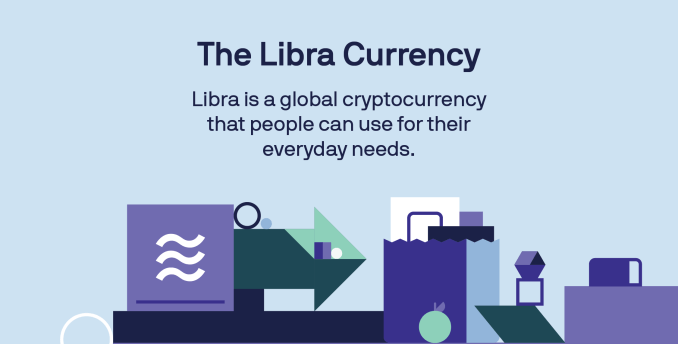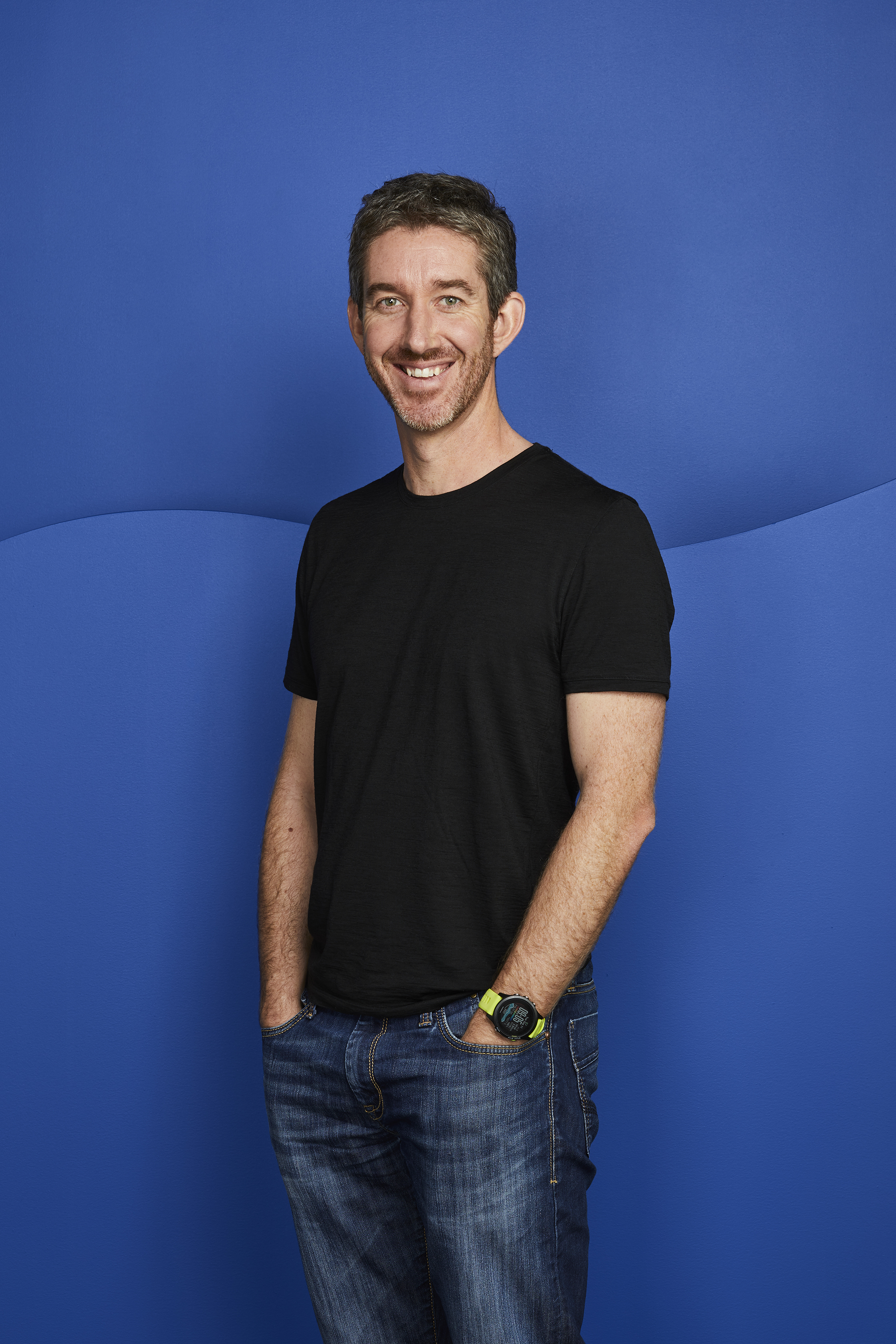The real risk of Facebook’s Libra coin is crooked developers
Everyone’s worried about Mark Zuckerberg controlling the next currency, but I’m more concerned about a crypto Cambridge Analytica.
Today Facebook announced Libra, its forthcoming stablecoin designed to let you shop and send money overseas with almost zero transaction fees. Immediately, critics started harping about the dangers of centralizing control of tomorrow’s money in the hands of a company with a poor track record of privacy and security.
Facebook anticipated this, though, and created a subsidiary called Calibra to run its crypto dealings and keep all transaction data separate from your social data. Facebook shares control of Libra with 27 other Libra Association founding members, and as many as 100 total when the token launches in the first half of 2020. Each member gets just one vote on the Libra council, so Facebook can’t hijack the token’s governance even though it invented it.

With privacy fears and centralized control issues at least somewhat addressed, there’s always the issue of security. Facebook naturally has a huge target on its back for hackers. Not just because Libra could hold so much value to steal, but because plenty of trolls would get off on screwing up Facebook’s currency. That’s why Facebook open-sourced the Libra Blockchain and is offering a prototype in a pre-launch testnet. This developer beta plus a bug bounty program run in partnership with HackerOne is meant to surface all the flaws and vulnerabilities before Libra goes live with real money connected.
Yet that leaves one giant vector for abuse of Libra: the developer platform.
“Essential to the spirit of Libra . . . the Libra Blockchain will be open to everyone: any consumer, developer, or business can use the Libra network, build products on top of it, and add value through their services. Open access ensures low barriers to entry and innovation and encourages healthy competition that benefits consumers,” Facebook explained in its white paper and Libra launch documents. It’s even building a whole coding language called Move for making Libra apps.
Apparently Facebook has already forgotten how allowing anyone to build on the Facebook app platform and its low barriers to “innovation” are exactly what opened the door for Cambridge Analytica to hijack 87 million people’s personal data and use it for political ad targeting.
But in this case, it won’t be users’ interests and birthdays that get grabbed. It could be hundreds or thousands of dollars’ worth of Libra currency that’s stolen. A shady developer could build a wallet that just cleans out a user’s account or funnels their coins to the wrong recipient, mines their purchase history for marketing data or uses them to launder money. Digital risks become a lot less abstract when real-world assets are at stake.

In the wake of the Cambridge Analytica scandal, Facebook raced to lock down its app platform, restrict APIs, more heavily vet new developers and audit ones that look shady. So you’d imagine the Libra Association would be planning to thoroughly scrutinize any developer trying to build a Libra wallet, exchange or other related app, right? “There are no plans for the Libra Association to take a role in actively vetting [developers],” Calibra’s head of product Kevin Weil surprisingly told me. “The minute that you start limiting it is the minute you start walking back to the system you have today with a closed ecosystem and a smaller number of competitors, and you start to see fees rise.”
That translates to “the minute we start responsibly verifying Libra app developers, things start to get expensive, complicated or agitating to cryptocurrency purists. That might hurt growth and adoption.” You know what will hurt growth of Libra a lot worse? A sob story about some migrant family or a small business getting all their Libra stolen. And that blame is going to land squarely on Facebook, not some amorphous Libra Association.

Image via Getty Images / alashi
Inevitably, some unsavvy users won’t understand the difference between Facebook’s own wallet app Calibra and any other app built for the currency. “Libra is Facebook’s cryptocurrency. They wouldn’t let me get robbed,” some will surely say. And on Calibra they’d be right. It’s a custodial wallet that will refund you if your Libra are stolen and it offers 24/7 customer support via chat to help you regain access to your account.
Yet the Libra Blockchain itself is irreversible. Outside of custodial wallets like Calibra, there’s no getting your stolen or mis-sent money back. There’s likely no customer support. And there are plenty of crooked crypto developers happy to prey on the inexperienced. Indeed, $1.7 billion in cryptocurrency was stolen last year alone, according to CypherTrace via CNBC. “As with anything, there’s fraud and there are scams in the existing financial ecosystem today . . . that’s going to be true of Libra too. There’s nothing special or magical that prevents that,” says Weil, who concluded “I think those pros massively outweigh the cons.”
Until now, the blockchain world was mostly inhabited by technologists, except for when skyrocketing values convinced average citizens to invest in Bitcoin just before prices crashed. Now Facebook wants to bring its family of apps’ 2.7 billion users into the world of cryptocurrency. That’s deeply worrisome.

Facebook founder and CEO Mark Zuckerberg arrives to testify during a Senate Commerce, Science and Transportation Committee and Senate Judiciary Committee joint hearing about Facebook on Capitol Hill in Washington, DC, April 10, 2018. (Photo: SAUL LOEB/AFP/Getty Images)
Regulators are already bristling, but perhaps for the wrong reasons. Democrat Senator Sherrod Brown tweeted that “We cannot allow Facebook to run a risky new cryptocurrency out of a Swiss bank account without oversight.” And French Finance Minister Bruno Le Maire told Europe 1 radio that Libra can’t be allowed to “become a sovereign currency.”
Most harshly, Rep. Maxine Waters issued a statement saying, “Given the company’s troubled past, I am requesting that Facebook agree to a moratorium on any movement forward on developing a cryptocurrency until Congress and regulators have the opportunity to examine these issues and take action.”
Yet Facebook has just one vote in controlling the currency, and the Libra Association preempted these criticisms, writing, “We welcome public inquiry and accountability. We are committed to a dialogue with regulators and policymakers. We share policymakers’ interest in the ongoing stability of national currencies.”
That’s why as lawmakers confer about how to regulate Libra, I hope they remember what triggered the last round of Facebook execs having to appear before Congress and Parliament. A totally open, unvetted Libra developer platform in the name of “innovation” over safety is a ticking time bomb. Governments should insist the Libra Association thoroughly audit developers and maintain the power to ban bad actors. In this strange new crypto world, the public can’t be expected to perfectly protect itself from Cambridge Analytica 2.$.
Get up to speed on Facebook’s Libra with this handy guide:
Powered by WPeMatico
People familiar with Slack’s upcoming public offering share what to expect
Slack, the popular workplace messaging company, is expected to list on the New York Stock Exchange on Thursday in the second major direct listing in the U.S. after Spotify introduced the concept to investors in April of last year.
At this point, plenty of industry observers think it makes sound sense for Slack to embrace the direct listing approach, wherein a company places its stock on a public exchange without raising any money or using underwriters. Though the company warned last week that its operating losses are widening as it chases new customers, it has $800 million on its balance sheet, meaning it doesn’t need to raise more right now.
Slack also doesn’t need underwriters who typically discount a company’s shares in order to ensure that they appreciate in value when they begin trading. It’s a known brand in the tech world, and that universe is broadening by the day. Put another way, Slack doesn’t need to be “sold” for investors to want to snap up its shares.
Still, we wondered about some of the thinking that has gone into preparing Slack for its move into the world of publicly traded companies, so we talked with a couple of people who are familiar with what’s happening behind the scenes to find out more. They asked not to be named, but here’s what we learned:
1) Unlike with the popular streaming music platform Spotify, which has more than 100 million premium subscribers and roughly twice as many active monthly users, Slack wasn’t as well-known to Wall Street as Silicon Valley might imagine. In fact, we’re told the bankers that were selected to advise Slack on its offering — Morgan Stanley, Goldman Sachs and Allen & Co., which are the same three that advised Spotify — had to provide more education to analysts and institutional investors this time around.
2) There will (hopefully) be enough shares to go around, while also not a glut of them. The big concern in a direct offering — which does not feature a lock-up period — is that too many people will dump their shares on the market, crushing the company’s share price, or else that too few will part with their holdings, turning the buying and selling of the company’s shares into a financial game of chicken. We’ll see what happens here, but we’re told the banks have spent the last six months trying to ensure that many — but not all — of the company’s institutional shareholders will be selling some of their stakes at the offering, Also worth noting is that unlike with Spotify, some Slack employees have restricted stock units that will vest upon its public listing and so be part of the supply of shares on its first day.
3) In establishing guidance around how Spotify’s shares should be valued, the banks advising the company looked almost entirely to its private market trades, of which there were many. There has been less secondary activity with Slack’s shares, so the banks are likely to rely on these sales but also to use other inputs. We’ll learn soon enough what they settle on, but based on the latest prices at which its shares have traded in the private market, Slack’s presumed valued right now is at $16.7 billion, or 36 times trailing 12-month sales.
4) You might imagine that banks hate direct listings because of the rich underwriting fees they aren’t collecting, and they probably do. Still, even with a direct listing, they get paid pretty well, thanks to both advisory fees and also because investors often trade through the banks named as advisers in the prospectus. There are also fewer mouths to feed on a deal with a direct listing. In Slack’s case — as happened with Spotify — Morgan Stanley, Goldman Sachs and Allen & Co. will reportedly reap almost all of the spoils — or a reported 90% of the $22 million in fees earmarked for all the advisers involved in the deal. In a traditional IPO, a longer number of banks that promise research coverage are given shares to sell, which eats into lead underwriters’ allotment.
5) One risk that Slack shouldn’t necessarily run into but that may have adversely impacted Uber’s IPO is its investor base. According to Slack’s S-1, its biggest outside shareholders include Accel (it owns 24% sailing into the offering), Andreessen Horowitz (13.3%), Social Capital (10.2%) and SoftBank (7.3 %). Why it matters: Slack doesn’t have to worry about less traditional private company backers like mutual funds not wanting to buy up its shares because they’re too busy trying to offload some.
6) Direct listings may well become a more popular product for consumer companies because companies can avoid further dilution, and there’s no lock-up on their shares, creating a shorter path to liquidity for the company and its employees and its investors. Still, Slack is probably anomalous as an enterprise company with a high enough profile to pull one off. The listings are really for companies that don’t need money any time soon and whose shares are already of interest to investors, who don’t need inducements to pay attention.
7) This is the second direct listing of a highly valued privately held company and, for the second time, it’s happening on the NYSE, with the same market maker, Citadel Securities, charged with ensuring orderly trading; the same bank, Morgan Stanley, selected to advise Citadel; and even the same law firms that worked on Spotify’s direct listing pulled back into service.
It’s nice if you’re part of this particular club, and no one can blame Slack for not wanting to reinvent the wheel. But one wonders how nervous it makes Nasdaq, as well as other banks and law firms, to be shut out of this process a second time.
Powered by WPeMatico
Atlassian’s co-CEO Scott Farquhar will join us at TC Sessions: Enterprise
Few companies have changed the way developers work as profoundly as Atlassian. Its tools like Jira and Confluence are ubiquitous, and over the course of the last few years, the company has started to adapt many of them for wider enterprise usage outside of developer teams.
To talk about Atlassian’s story from being a small shop in Australia to a successful IPO — and its plans for the future — the company’s co-founder and co-CEO Scott Farquhar will join us at our inaugural TechCrunch Sessions: Enterprise event on September 5 in San Francisco.
 Farquhar co-founded Atlassian with Mike Cannon-Brookes, in 2001. It wasn’t until 2010, though, that the company raised its first major venture round ($60 million from Accel Partners). Even by that point, though, the company already had thousands of customers and a growing staff in Sydney and San Francisco.
Farquhar co-founded Atlassian with Mike Cannon-Brookes, in 2001. It wasn’t until 2010, though, that the company raised its first major venture round ($60 million from Accel Partners). Even by that point, though, the company already had thousands of customers and a growing staff in Sydney and San Francisco.
Today, more than 150,000 companies use Atlassian’s tools. These range from the likes of Audi to Spotify, Twilio and Visa, with plenty of startups and small and medium businesses in between.
It’s no secret that Farquhar and Cannon-Brookes consider themselves accidental billionaires, so it’s maybe no surprise that in 2015, ahead of Atlassian’s successful IPO that valued it at well above $10 billion, he also signed on to the 1% Pledge movement.
Today, Farquhar also makes his own venture investments as part of Skip Capital, which he co-founded.
TC Sessions: Enterprise (September 5 at San Francisco’s Yerba Buena Center) will take on the big challenges and promise facing enterprise companies today. TechCrunch’s editors will bring to the stage founders and leaders from established and emerging companies to address rising questions, like the promised revolution from machine learning and AI, intelligent marketing automation and the inevitability of the cloud, as well as the outer reaches of technology, like quantum computing and blockchain.
Tickets are now available for purchase on our website at the early-bird rate of $395; student tickets are just $245.
We have a limited number of Startup Demo Packages available for $2,000, which includes four tickets to attend the event.
For each ticket purchased for TC Sessions: Enterprise, you will also be registered for a complimentary Expo Only pass to TechCrunch Disrupt SF on October 2-4.
Powered by WPeMatico
Careteam aims to unite patients and healthcare providers with a platform approach
How best to untangle the Gordian knot that is navigating your own healthcare? It’s a tricky question, and one that seems to have become only more complicated as technology improves, in many regards — systems don’t necessarily speak to one another, and it’s still hard for an ordinary patient without specialist knowledge to make sense of everything. Careteam is a Canadian startup hoping to address that, looking to replicate the kind of advances made possible by technology in industries like e-commerce and enterprise software.
Careteam co-founder and CEO Dr. Alexandra Greenhill has experienced the frustration of being a tech-savvy person in a world of healthcare that can seem technologically inept — both as a practicing GP and as someone who depends on the healthcare system as a patient and a relative of patients with more sophisticated medical needs.
“I spent more than 15 years innovating within the healthcare system,” Greenhill told me in an interview. “I computerized hospitals, helped doctors adopt electronic medical records and other types of innovation practices. And then for the last eight years, I’ve been in tech, trying to figure out how to build the kind of technology we need in health, and especially digital health.”
All that experience led Greenhill to the realization that while there were many companies building specific solutions for real, but relatively narrow problems, that didn’t reflect how most people experienced care. Greenhill and her team of three other co-founders (Jeremy P. Smith, Robert I. Atwell and Kevin Lysyk) had all had unfortunate, but eye-opening experiences with family members in need of treatment for major diseases.
“You step in and you discover that cancer care, palliative care, post-surgical care — there’s so many things that would have gone wrong if we didn’t have the expertise ourselves,” Greenhill said. “But in the meantime, you end up being sort of pulled into multiple directions and saying ‘this makes no sense.’ You know, I can purchase stuff online in my private life; I can use all kinds of tools in the business world, and yet it’s back to paper and voice in health, which matters most.”

Careteam CEO and founder Dr. Alexandra Greenhill
What Careteam provides is collaboration for care — true collaboration, designed to span patients, their doctors and other healthcare pros, their families and anyone who matters to them in the course of pursuing their care. It provides the ability to communicate instantly, build care plans that integrate all aspects of their tailored health plans, receive custom-configurable notifications and measure progress toward specific goals set by patient and healthcare providers.
Part of the reason this process has become opaque or difficult is precisely due to innovation: Greenhill takes issue with the prevailing narrative that the healthcare industry is somehow allergic to innovation.
“There’s this sort of perception that healthcare doesn’t innovate, but it’s also almost insulting to the healthcare system, because we have innovated — we save people from cancer, where we couldn’t,” she noted. “We cure HIV, in some cases, and we prevent it from being transmitted to unborn babies of mothers with full-blown AIDS and things that in my working lifetime were impossibilities; it was science fiction to help someone with HIV. And, and we’ve managed to do all of that, and it’s a success story. We’ve created complexity, we’ve created people who live with 12 conditions for many, many years and take complicated drug regiments.”
 In addition to advances in treatment, Greenhill notes that she and her team couldn’t have build Careteam five years ago, because cloud storage wasn’t secure and everything had to be done on a site-specific instance, and that would’ve been cost-prohibitive to build. In other words, technology has been applied to, and vastly improved, healthcare overall, regardless of the general perception of the industry as an innovation laggard.
In addition to advances in treatment, Greenhill notes that she and her team couldn’t have build Careteam five years ago, because cloud storage wasn’t secure and everything had to be done on a site-specific instance, and that would’ve been cost-prohibitive to build. In other words, technology has been applied to, and vastly improved, healthcare overall, regardless of the general perception of the industry as an innovation laggard.
That’s why Greenhill’s startup doesn’t shy away from complexity — they embrace it. Careteam is designed not to try to normalize and standardize the varied and highly specialized landscape of healthcare solutions and providers through anything like a one-size-fits-all API. Instead, the company’s tech development is cleverly designed to be flexible when it comes to integrations.
“We collectively spent $1.9 billion in Canada, to try and digitize the healthcare system, create standards and create some exchange between data,” Greenhill said. “The NHS tried the same, big U.S. hospital systems have created their own little sort of islands, including Kaiser and Mayo and others. And the conclusion of all of that is standardization in healthcare just doesn’t seem to catch on.”
Careteam’s approach has been instead to integrate specific clinics, and let practitioners and patients derive benefits and help spur the adoption of the platform to their companion organizations and clinics. It’s a sort of rhizomatic approach that starts with a node central to a patient’s care and spreads through the healthcare professionals and members of the patient’s support network that the product helps. And integration is made possible without technical demands on the part of partners thanks to the work of CTO Lysyk, according to Greenhill.
The Vancouver-based startup is working with the Centre for Aging + Brain Health in Toronto, Ontario in a validation program announced last year, and also raised an initial round of funding in January led by BCF Ventures with participation from Right Side Capital, Globalive Capital, Atrium Ventures, and angels Barney Pell and Ajay Agarwal .
Powered by WPeMatico
For pen testing firm IOActive, security is cultural not transactional
IOActive may not be a household name but you almost certainly know its work.
The Seattle-headquartered company has been behind some of the most breathtaking hacks in the past decade. Its researchers have broken into in-flight airplanes from the ground and reverse engineered an ATM to spit out gobs of cash. One of the company’s most revered hackers discovered a way to remotely shock a pacemaker out of rhythm. And remember that now-infamous hack that remotely killed the engine of a Jeep? That was IOActive, too.
If it’s connected, they will bet that they can hack it.
IOActive has made a name for itself with its publicly reported findings, but its bread and butter is helping its corporate customers better understand how they approach security.
Since its founding more than two decades ago, the penetration testing and ethical hacking company now serves customers mostly in the Global 1000 largest companies to help assess and test their security posture.
“You can have the absolute most sophisticated alarm in the entire world, and I guarantee our team can break in,” said Jennifer Steffens, IOActive’s chief executive, in a call with TechCrunch. “But if you left your front door unlocked lock, hackers are going to walk right through”
“Don’t pay us to show you how to break into the alarm before someone learns how to lock the door,” she said.
Powered by WPeMatico
Probably Genetic helps families identify genetic conditions early with AI and DNA tests
Children on the autism spectrum often suffer from other medical conditions. As many as one-fifth of those diagnosed with the neurodevelopmental disorder, which affects communication and behavior, have epilepsy, for example, according to research on the subject.
Probably Genetic, which recently graduated from the startup accelerator Y Combinator, wants to test the DNA of children with autism to provide them early diagnoses of more than 15 severe genetic diseases that are often grouped under the initial autism diagnosis. Using machine learning and direct-to-consumer DNA tests, Probably Genetic hopes to provide families of children on the spectrum with more complete and correct diagnoses and a path to appropriate treatment and therapy.
“There is really low awareness still in the medical community for a lot of these diseases,” Probably Genetic co-founder and chief executive officer Lukas Lange tells TechCrunch. “The actual testing happens really really late in the process … Even once you decide that you want to get your kid genetically tested, that process itself is really difficult because if you don’t have a physician in favor of it, patients spend months lobbying to get the test done.”
The startup, which plans to launch this summer, is backed with venture capital funding from Khosla Ventures, TenOneTen Ventures, the Oxford Angel Fund and angel investors. Lange, a current PhD candidate in bioinformatics and genetics at the University of Oxford, said the company is keeping the precise amount of capital they’ve raised private, citing a focus on building the best service for special needs families.
“We measure ourselves by how many families we’ve helped, as opposed to how much money we’ve raised,” Lange said.
Unlike 23andMe, which similarly provides genetic testing direct-to-consumer, Probably Genetic is patient-initiated physician-ordered testing, meaning a physician is in the loop throughout the entire process and a DNA test must be deemed “medically necessary” by a Probably Genetic physician — the company partners with several doctors — before it can be ordered.
Probably Genetic performs whole-exome sequencing, a process that can cost upwards of $5,000, to test for genetic disorders in children already diagnosed with autism. Lange said the team is still determining the price of its genetic tests, but assures it will fall under $1,000, or significantly less than other options on the market. Unfortunately, the tests will not be covered by insurance.
The company doesn’t perform genetic sequencing in-house, rather, it partners with a U.S.-based clinical sequencing provider accredited by the College of American Pathologists (CAP) and certified through Clinical Laboratory Improvement Amendments (CLIA). Probably Genetic also partners with a bioinformatics service provider that’s plugged into the lab for data analysis purposes.
Parents of children with autism oftentimes have difficulty having their children tested, as Lange mentioned. Not only are these tests costly and infrequently covered by insurance, but they are also not offered by general care practitioners. A family has to receive a referral from their doctor to visit a specialist who will then have the test ordered. Using Probably Genetic, Lange and his co-founder, chief technology officer Harley Katz, hope to create a one-stop shop for complete and early diagnoses, access to genetic counseling services, and information and resources for families of people on the spectrum.
The genetic counseling services, which exist to help families better understand the results of their genetic tests, will be offered through an external service provider initially. In the long-term, Lange said, Probably Genetic will consider hiring their own full-time counselors.
Lange met Katz, a PhD in theoretical astrophysics from the University of Cambridge, six years ago. The pair quickly realized a common interest in accurate diagnosis, or lack thereof, before they decided to focus on autism and its associated conditions.
“We initially thought we are going to build a catch-all for 7,000 different rare diseases,” Lange said. “Pretty quickly we realized a whole lot of people coming to your door have undiagnosed diseases but not all are genetic in nature so if you try to build a catch-all you wouldn’t be able to help a lot of people. So we decided let’s focus on one area that has a much higher likelihood that the patients that come through your door actually have something genetic.”
According to a 2018 report from the Center for Disease Control and Prevention, one in 59 children is diagnosed with autism. Boys are four times more likely to be diagnosed than girls.
“There’s a big opportunity here to focus on a category that we know already genetics plays a huge role but still an opportunity to find kids who don’t ‘just have autism’ but where there is actually something bigger at play and autism is only a part of their disease presentation.”
Powered by WPeMatico
Fresh off a $2.65B valuation, Plaid co-founder William Hockey is leaving
William Hockey, co-founder, chief technology officer and president of the fast-growing fintech business Plaid, will step down next week, TechCrunch has learned.
The former Bain associate (pictured above left) co-founded the startup in 2012 alongside chief executive officer Zach Perret. Today, the San Francisco-based company employs 300 with additional offices in Salt Lake City and New York.
Plaid has confirmed the news, stating that Hockey will remain on the company’s board of directors.
“This conclusion was neither a rash nor a recent decision,” Hockey writes in a blog post shared with TechCrunch. “Over the past couple of years, I have known that there would come a point at which I would choose to move to a purely strategic and advisorial role.”
Most companies should be constantly running running at least one exec search. Post-product/market fit, the limiting factor to scale generally derives from some version of not having enough great leaders.
— Zachary Perret (@zachperret) June 18, 2019
Plaid builds infrastructure that allows consumers to interact with their bank account on the web, powering a number of third-party applications, like Venmo, Robinhood, Coinbase, Acorns and LendingClub. It rose to prominence recently, closing a $250 million Series C investment at a $2.65 billion valuation late last year. The deal was led by famed venture capitalist and author of the Internet Trends report Mary Meeker, who’s joined the startup’s board of directors.
In total, Plaid has secured $310 million in venture capital funding from Andreessen Horowitz, Index Ventures, Norwest Venture Partners, Coatue Management, Goldman Sachs, NEA, Spark Capital and others.
Plaid has integrated with 15,000 banks in the U.S. and Canada and says 25% of people living in those countries with bank accounts have linked with Plaid through at least one of the hundreds of apps that leverage Plaid’s application program interfaces (APIs) — an increase from 13% last year. Last month, the company launched its fintech platform in the U.K.
“As we’ve done in the U.S., Plaid will become the foundation for that growth by providing access to a financial network that allows developers to deliver the experience users expect from their financial apps,” the company wrote in a blog post.
TechCrunch participated in a panel discussion with Hockey and Brex CEO Henrique Dubugras last month, in which Hockey gave no indication of impending plans to leave the business. In fact, taking off just as Plaid amps up its global expansion efforts and accelerates growth is strange timing for a founder to depart.
Oftentimes, when a startup co-founder steps down from the C-suite, it’s to make room for a more experienced executive to lead the company through periods of fast growth. Recently, for example, Lime announced its co-founder Toby Sun would transition out of the CEO role to focus on company culture and R&D. Brad Bao, a Lime co-founder and longtime Tencent executive, assumed chief responsibilities.
Other times, it comes amid turmoil. Mike Cagney’s departure from SoFi, of course, is an example of this. One month after reports of a sexual harassment and wrongful termination lawsuit against the online lending business surfaced, SoFi announced Cagney would step down.
In Hockey’s case, the move was planned and calculated, he said. Plaid chief operating officer Eric Sager, who joined earlier this year, Perret and other executives will take over engineering and product reports, among Hockey’s other responsibilities.
“In tech, it has historically been taboo to talk about founders or executives transitioning to different roles inside companies,” Hockey writes. “Leadership transitions need to become a bedrock of any company that desires to endure across decades.”
Powered by WPeMatico
SafeAI raises $5M to develop and deploy autonomy for mining and construction vehicles
Startup SafeAI, powered by a founding talent team with experience across Apple, Ford and Caterpillar, is emerging from stealth today with a $5 million funding announcement. The company’s focus is on autonomous vehicle technology, designed and built specifically for heavy equipment used in the mining and construction industries.
Out the gate, SafeAI is working with Doosan Bobcat, the South Korean equipment company that makes Bobcat loaders and excavators, and it’s already demonstrating and testing its software on a Bobcat skid loader at the SafeAI testing ground in San Jose. The startup believes that applying advances in autonomy and artificial intelligence to mining and construction can do a lot to not only make work sites safer, but also increase efficiencies and boost productivity — building on what’s already been made possible with even the most basic levels of autonomy currently available on the market.
What SafeAI hopes to add is an underlying architecture that acts as a fully autonomous (Level 4 by SAE standards, so no human driver) platform for a variety of equipment. Said platform is designed with openness, modularity and upgradeability in mind to help ensure that its clients can take advantage of new advances in autonomy and AI as they become available.
“We have seen and experienced deploying autonomous mining truck in production for last 10 years,” explained SafeAI Founder and CEO, Bibhrajit Halder in an email. “Now it’s time to take it to next level. At SafeAI, we are super excited to built the future of autonomous mine by creating autonomous mining equipment that just works.”
While SafeAI doesn’t have product in market yet, it is running its software on actual construction hardware at its proving ground, as mentioned, and it’s working with an as-yet unnamed large global mining company to deploy SafeAI in a mining truck, according to Halder. The company’s plan is to focus its efforts entirely on deploying fully Level 4 autonomy as its first available commercial product, with a vision of a future where multiple pieces of mining equipment are working together “seamlessly,” the CEO says.
Today’s $5 million round includes investment led by Autotech Ventures, and includes participation from Brick & Mortar Ventures, Embark Ventures and existing investor Monta Vista Capital.
Powered by WPeMatico
Leaving for a competitor? Onboarding new employees? Avoid accusations of trade secret theft
Contributor
When a company hires talent away from a competitor, onboarding the new employee can pose significant legal risks for both the company and the new employee. A fundamental aspect of Silicon Valley is that employees are generally free to move between competitors.
This unrestricted movement of talent facilitates the robust competition that helps drive the Silicon Valley economy. While this is no doubt positive, unfettered employment mobility also creates unique challenges when it comes to protecting a company’s trade secrets, which are the lifeblood of many Silicon Valley companies.
Because of California’s policies regarding free employment mobility, unlike in most other states, California companies cannot protect their trade secrets with non-compete contracts. So, they instead rely heavily on trade secret laws for protection.
And, of course, when trade secret theft occurs, it is often when an employee transitions from one company to another. Thus, when a key employee gives notice that he or she is leaving for a competitor, it sets off alarm bells for the soon-to-be former company.
Unfortunately, because of the hypersensitivity to protecting trade secrets, many departing employees who have no interest in actually taking their former company’s trade secrets get accused of theft. This allegation can trigger a long, stressful, expensive legal process for both the employee and the new company, and sometimes cost the employee his or her reputation and new job.
This article explains how this situation arises and provides some practical considerations for how the employee transitioning jobs, and the onboarding company, can avoid an unnecessary legal fight.
1. California companies’ aggressive protection of trade secrets.
Powered by WPeMatico
Simone Giertz’s converted Tesla Model 3 pickup truck is wonderful
YouTuber Simone Giertz, celebrated DIY inventor, roboticist and general maker of cool stuff, decided not to wait for Tesla’s forthcoming pickup truck. Instead, she bought a Tesla Model 3 direct from the company new and then used elbow grease, ingenuity, some help from friends and power tools to turn it into a two-seater with a flatbed.
The amazing thing is, unlike some of the robots Giertz is famous for making, the final product looks terrific — both in terms of the detail work and in terms of its functionality. Giertz also installed a cage over the truck bed, and a tailgate that can double as a work bench. Plus, as you can see from this fake commercial for the so-called “Truckla,” the thing still rips both on and off-road.
Along with her crew, Giertz rented a dedicated workshop to do the build, which took around two weeks and a lot of sawing at the metal chassis. The team had to rebuild crucial components like the roll cage to ensure that the finished product was still safe.
There’s still work to be done in terms of waterproofing, lifting up the vehicle, giving it a paint makeover and more, per Giertz, but the finished product looks amazing, and potentially better than whatever sci-fi nightmare Elon Musk is putting together for the actual Tesla pickup.
Powered by WPeMatico

